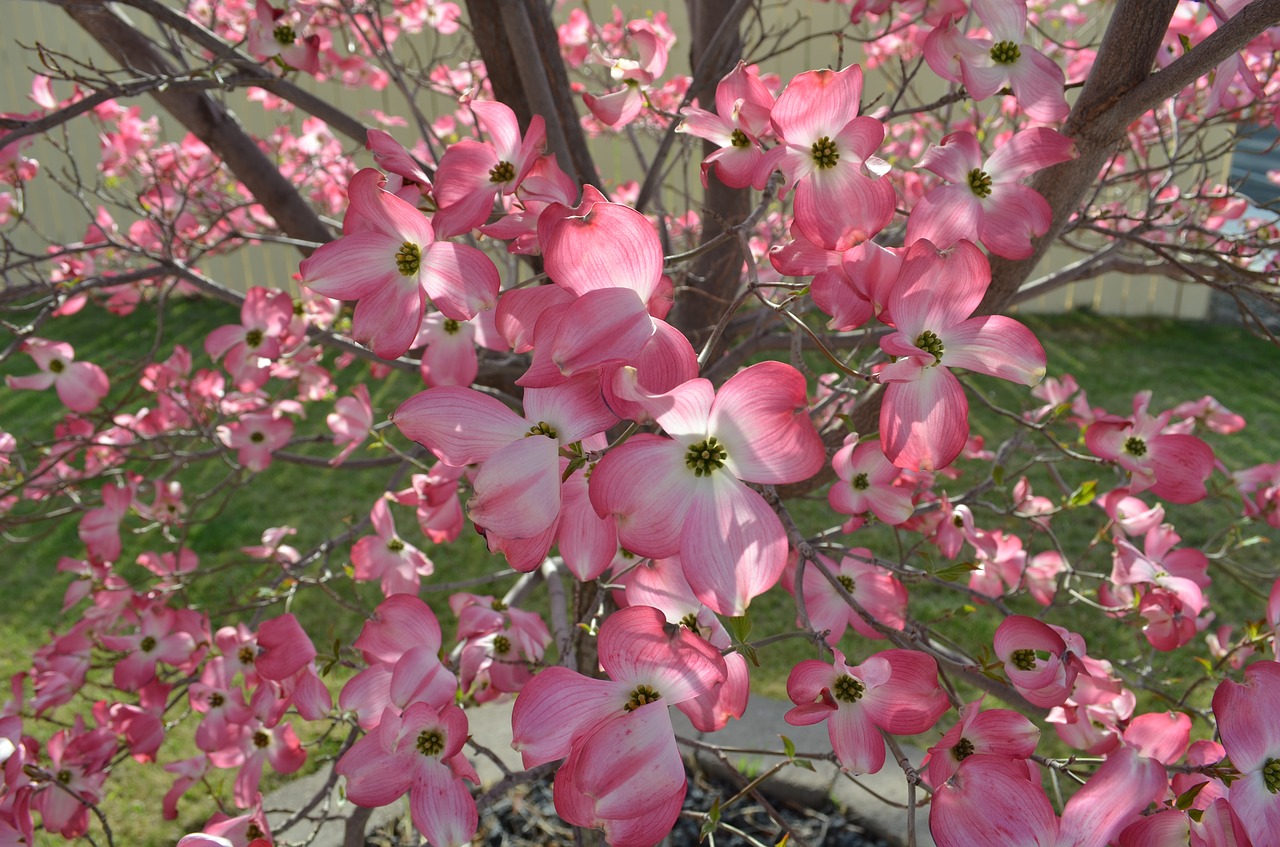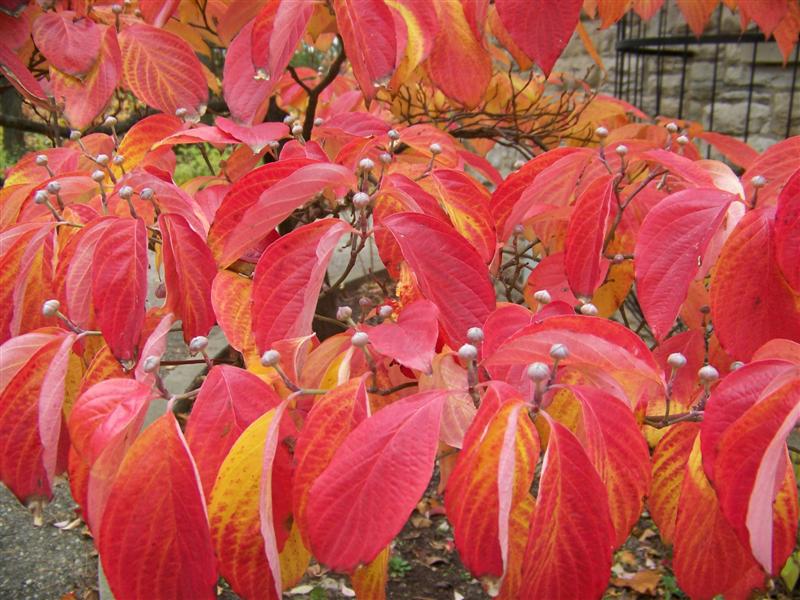By Sandra Nelson
This week’s pick is by Sandy Defoe, Artistic Director.
Flowering Dogwood
You can’t beat the graceful form, gorgeous spring flowers and excellent fall color.”
Seeing their show right now, it’s easy to see why Flowering Dogwood trees are a Must Have for the garden.
Flowering dogwood, Cornus florida, is a small, deciduous species native to the United States. As an understory tree, it grows best in partial shade, but can also tolerate full sun if kept well-watered and mulched during the heat of our Midwestern summers. A fast grower, under ideal conditions, a flowering dogwood can add up to a foot of height in a year; some reach a mature height of 25 to 30 feet in a decade.
An all-seasons tree, flowering dogwoods are known for their elegant early spring displays in white, pink and red. Their name however, is misleading since what appears to be a four-petaled bloom is actually four bracts surrounding a tiny, insignificant (and relatively homely) cluster of yellow-ish green blooms.
Blooms give way to attractive dark green leaves that remain throughout the summer and turn a striking shades of red in the fall.
https://commons.wikimedia.org/wiki/User:Dcrjsr
Berries, which taste bitter to humans but are beloved by birds, small mammals and deer, begin to form and ripen during the later part of the summer into the fall. Then, as the flowering dogwood drops its leaves, the tree’s form takes center stage.
Redbuds and dogwoods often overlap in bloom time, so can be beautiful as companion plantings, especially in a naturalized setting. Both flowering dogwoods and redbuds do well as spring planted trees.
Zones: 5 – 9







